On China’s Recent Monetary Adjustment
Interest rate cut: a not-so-stimulating stimulus policy
Author : Source : Chinese Social Sciences Net 2012-07-05
On June 7th, 2012, the People’s Bank of China announced a lowering of the benchmark interest rate by 25 basis points to take effect on June 8th, something which caused a sensation in the market.
Yet, the market should have expected this “unexpected” policy. Since the latter half of last year, there had been pessimistic forecasts about the slowdown of the Chinese economy. According to this year’s data, the economy has indeed been growing at a weaker pace. The most recent series of data in particular was below the market expectations. The purchasing managers’ index (PMI), an indicator of the nation’s manufacturing activity, retreated to 50.4% in May, 2.9% lower than that of the previous month. April saw an increase in the PPI by 0.2% compared with March, and a drop by 0.7% compared with a year earlier, which indicated a deflation in industrial product prices. From January to April 2012, industrial enterprises at the national scale made a profit of 1.4525 trillion Yuan, down 1.6% year on year. Far below the market expectations, new loans plunged to 681.8 billion Yuan in April from 1.01 trillion Yuan in May. There are meanwhile signs pointing towards policy adjustment. From the 18th to the 20th of May 2012, Premier Wen Jiabao called for efforts to “strengthen macroeconomic control, implement timely and appropriate pre-emptive adjustment and fine-tuning policies” and “give more priority to maintaining growth” during his inspection tour in Wuhan.
But why was the market startled at the interest rate cut?
First of all, an agreement had been reached within the market that Chinese economic growth will slow down, but opinions were divided over whether it is necessary to carry out stimulus plans. As a result, financial institutions all cut their forecasts on 2012 economic growth. For example, the IMF predicted an annual growth of 8.2% for China in 2012. Some other institutions, in a more pessimistic mood, trimmed the 2012 outlook to be lower than 8%. Yet, even if the figure were lower than 8%, would the Chinese economy be at stake? Why must Chinese economic growth stay above 8%? There is no convincing evidence of this. It is said that only when economic growth stays above 8% can China create enough job opportunities, so in 2008 the Chinese government hastily released the huge 4 trillion Yuan stimulus package, worrying that a mass of migrant workers might lose their jobs. But it is now the labor shortage, rather than the severe unemployment, that poses the great problem. Enterprises have indeed made less money, but chain bankruptcies have not arisen yet. As a matter of fact, the economic growth over 10% registered in previous years resulted largely from the promising international economy, so the current global economic recession would inevitably lead the Chinese economy to a lower growth rate. It is actually not a serious problem.
If the employment situation is hopeful, the easy monetary policy should be fine-tuned. Although the economic growth rate has been declining, this economic shock didn’t exert a negative impact on employment. According to the official PMI readings, the climate index for jobholders has been maintained above the critical level of 50.5 in recent months. With the changing of the spatial and age composition of the labor market, it is necessary to enhance investigations, studies and pre-judgments. If the job market is not overtly threatened, the government should fine-tune its loose monetary policy. Over-adjustment is otherwise very likely to result in an overheating economy.
Secondly, the market has been lingering on whether to adopt interest reduction policies to boost the economy. By the end of last year, it was pointed out in the Central Economic Working Conference that the government should take proactive fiscal measures and prudent monetary policies, which is quite a smart policy mix. China is currently in a very good financial situation, when the fiscal deficit accounts for less than 1.5% of GDP and the share of outstanding debt is below 20% of GDP. Even if local debts are included, the outstanding debt will take up only 50% to 70% of GDP. In addition to the good financial situation, China boasts sufficient opportunities for investment. While private investment in property continues to dip, investment in indemnificatory houses is still hot. Infrastructure construction, including for railways, will go on. In 2010, the government promised to increase investment in water conservancy projects, but the economy was put at a overheating risk at the time. Now the economic downturn provides a good opportunity to increase investments in rural infrastructure, including water conservancy projects. During the 12th Five-year plan, China will focus on the emerging strategic industries, so as to seize a commanding position in the global economy. Meanwhile, importance should be attached to investment increase in livelihood projects. With more and more social contradictions presenting themselves nowadays, it is ever more urgent to construct a harmonious society. To attain this goal, it is a must to increase investments in public goods like education and health care, and spare enough money for the grassroots and for the benefit of the people. Proactive fiscal measures will not only prevent the Chinese economy from taking a “hard landing”, but also create good opportunities for structural reform. With such a solid fiscal foundation, I don’t think it is necessary to launch an expensive new stimulus plan.
Taking a step back, even if we cut interest rates, can economic growth rate start to rebound? In terms of the current Chinese economy, if it takes no medicine it will not turn out as bad as imagined, and the situation will basically remain unchanged even if it takes all effective medicines. The sharp decline in bank loans in April seems to show that it is not a matter of tight credit policies, but that enterprises are too pessimistic about the future. To change their attitude, we have to adjust the economic structure, open up the service industry, lighten their tax burden and improve the people’s income. The 25 basis points of interest rate cut will not liberate enterprises from worry. At present, small- and medium-sized enterprises (SMEs) are going through the hardest times, but they are insensitive to interest rates. It is the capital markets and the real estate industry that are vulnerable to the changes in interest rates. If this interest cut is not very effective, is another cut necessary? Is the seemingly strong stimulation expected to bring about a revival of enterprises or an expansion of the asset price bubble?
The policy of interest rate cuts is probably formulated out of fear of a slowdown in economic growth and concern about the global economy. The situation in Europe is marked by drastic changes. For the time being, everyone is talking about Greece’s exit from the Euro zone and the possibility of a Euro collapse. Ironically, the world was stressing structural reform last year but this year, stabilizing growth is a hot topic. However, the world economy is in fact not as bad as imagined. Greece may not exit the Euro zone. Even if it exits, the Euro zone will not necessarily break up. The exit of Greece represents nothing more than saving the whole of Europe. As far as America and Japan are concerned, this year witnessed quite a strong economic momentum, which could offset the impact of the European recession to some extent. The fall in the prices of international oil and staple commodities, to a certain degree, allows the world economy a moment of reprieve.
If there is one interest rate cut for economic stimulation, there will be more. It is really a stimulus for the capital market, but not for the Chinese economy in the long run. This should be a moment for soft fire, but a blazing fire arrives. Thus, if the policy is “over-tuned”, we will be confronted with hard coal.
Liberalization of interest rates: what we should focus on
Above all, this interest rate cut is bound to narrow the interest margin and contain the profitability of banks. For one thing, there is basically no change in the deposit rate. While the benchmark deposit rate is cut by 25 basis points, deposit rates are allowed to float higher, so no cut has been made in the real deposit rate. In the wake of this policy, the five big commercial banks and some small and middle commercial banks would, on the basis of the benchmark interest rate, all raise the benchmark deposit rate. For these banks, the deposit interest rates could at least return to 3.5%, the level prior to the interest rate cut. For another thing, the cut in benchmark loan rates could allow the loan rate to float lower by 0.8 times from the previous 0.9 times.
Secondly, the adjustment in interest rates reflects the monetary policies’ favoring of the real economy. On the one hand, borrowers can be put in a better situation. On the other, depositors’ interests are protected as well. Therefore, the combination of cutting interest rates and leaving room for interest rate floating is conducive to enterprises’ reduction of capital costs when the profits of industrial enterprises are suffering from a continued decrease. Meanwhile, inequitable income distribution caused by expansionary monetary policies can be turned around. Previously, it was depositors (net creditors) that bore the cost of expansionary monetary policies, but during this monetary loosening, the commercial banks will become the principal bearer. The profitability of commercial banks, in return, backs up this macro-economic policy.
Thirdly, the promotion of interest rate liberation entails greater access to the market. This monetary adjustment, apart from sending the easing signal, also marks a big step forward in the nation’s efforts to push forward market-oriented interest rates. In the meantime, it may restrict the stimulation of the real economy in two ways. Firstly, due to the fall in the inflation rate, the real interest rate may not decline with the nominal interest rate and the economy faces an uncertain outlook, so when the nominal interest rate has fallen, the demand for loans may decrease as well. Secondly, financing has always been difficult for SMEs, so they could hardly enjoy the advantages brought by the cut in the benchmark loan rate and the expansion in the lower limit of interest rates. To them, the loan rate hike is the major problem.
Therefore, it is important to give easier market access. Expanding the floating range of deposits and loan rates can contribute to the liberalization of interest rates, but it may still be inadequate to solve some problems caused by the uneven distribution of financial resources, like the financing difficulties for the SMEs. It is thus necessary to open the market to drive the development of small and medium commercial banks, advance the construction of the bond market and improve the structure of the financial market.
Finally, attention should be paid to the potential risk posed by smaller interest margins. As the bank’s on-balance profitability is falling, efforts should be made to guide commercial banks to develop off-balance business. The bank’s profit, boiling down to the fundamental, is made through on-balance and off-balance businesses. When the on-balance business has been impacted by narrowing deposit and loan interest margin and the cost is rising, the bank may prefer high-risk areas like real estate and stock (to raise interest rates), which however may give rise to capital price bubbles. This is also a lesson learned from the capital price bubble emerging in Japan in the 1980s. For such, it is essential to guide commercial banks (small- and medium-sized banks in particular), encourage them to make innovations in off-balance business, usher in new profitable channels and adapt themselves to smaller interest margins.
The author is deputy director of IWEP, CASS.
Translated by Chen Mirong
Ye Shengtao made Chinese fairy tales from a wilderness
Ye Shengtao (1894–1988) created the first collection of fairy tales in the history of Chinese children’s literature...
-
How northern ethnicities integrated into Chinese nation
2023-09-18
-
Mogao caves
2023-09-12
-
Mogao Grottoes as ‘a place of pilgrimage’
2023-09-12
-
Time-honored architectural traditions in China
2023-08-29
-
Disentangling the civilizational evolution of China
2023-08-28
-
AI ethics in science fiction
2023-08-23





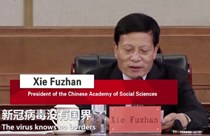
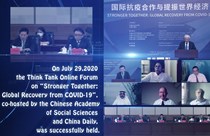
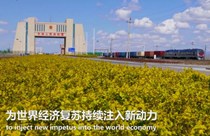
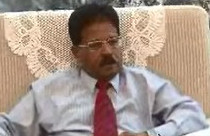


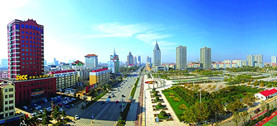


 2011-2013 by www.cssn.cn. All Rights Reserved
2011-2013 by www.cssn.cn. All Rights Reserved